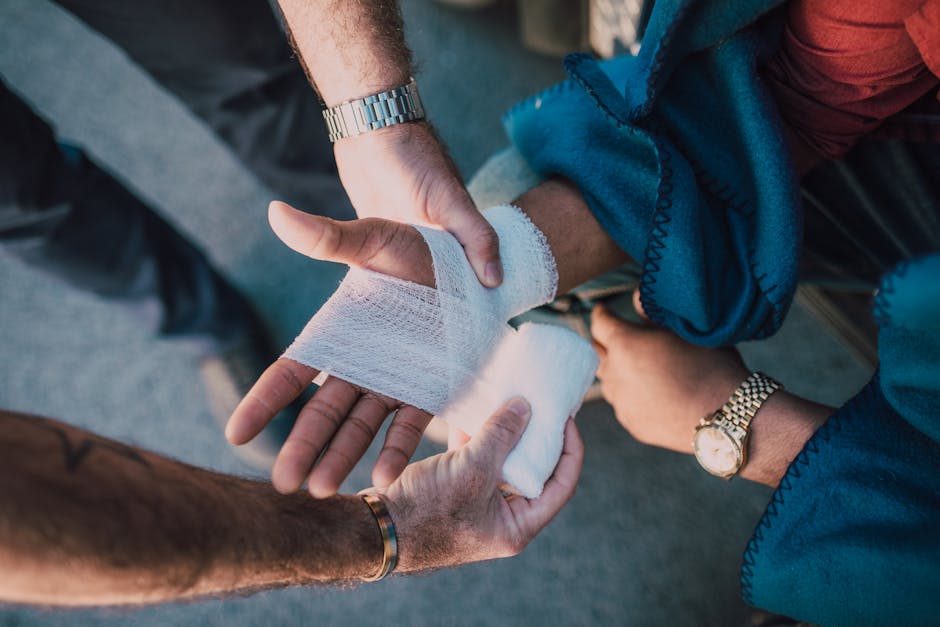Understanding Heat Exposure
Definition of Heat Exposure
Run Away Sunstroke isn’t just a catchy phrase—it’s the survival mindset that could save your brain, your organs and even your life when the thermometer screams. Picture this: you’re crushing a weekend 5K, sweat flying, pride soaring—until your vision tunnels and the party in your head turns to static. In that split second your body is begging for one thing: cool relief. By the end of this read you’ll know exactly how to sense the danger, switch on your inner “cool-down mode,” and sprint back to safety long before heatstroke sprints after you.
Heat exposure refers to the condition where the body is subjected to high temperatures, especially during prolonged periods of outdoor activity or in poorly ventilated indoor environments. This exposure can occur due to extreme weather conditions, such as heat waves, or can result from engaging in vigorous physical activity in the sun. Heat exposure is a crucial concept to understand, given its potential health risks and the severity of its consequences.
For instance, think about a weekend picnic on a particularly hot day. Many of us relish the sunshine, but it’s imperative to recognize when the enjoyment might start turning into unhealthy heat exposure.
Impact of Excessive Heat on the Body

Excessive heat can significantly impact various bodily functions. Some immediate effects include:
- Increased Heart Rate: The heart works harder to cool the body, making you feel fatigued.
- Dehydration: Sweating leads to fluid loss, which can result in dizziness.
- Heat Cramps: Intense exercise in the heat can cause painful muscle spasms.
Over time, unchecked heat exposure may lead to heat-related illnesses such as heat exhaustion or heat stroke. For instance, older adults and infants are particularly vulnerable to these conditions. Did you know that about 600 people die from excessive heat every year in the United States alone?
Recognizing the signs and understanding the risks involved with heat exposure is crucial for staying safe during those sizzling summer months.

Risks and Dangers of Sunstroke
Symptoms of Heat Stroke
Recognizing the symptoms of heat stroke is vital for immediate intervention. Unlike mere heat exhaustion, which might present itself as heavy sweating and fatigue, heat stroke escalates quickly and can be life-threatening.
Common symptoms to watch for include:
- High body temperature: Typically 104°F (40°C) or higher.
- Altered mental state: Confusion, agitation, or loss of consciousness.
- Hot, dry skin: The body stops sweating despite the heat.
- Nausea and vomiting: You might feel queasy or even have diarrhea with heat stroke.
Picture this: you’re at a summer festival, having a great time with friends. Suddenly, someone in your group starts acting confused and mentions feeling dizzy. This could be a crucial moment to check for signs of heat stroke!
Health Risks Associated with Sunstroke
Sunstroke is not just an uncomfortable experience; it can pose severe health risks. The damage can extend beyond the immediate crisis. Potential health implications include:
- Brain damage: Prolonged high temperatures can affect brain function, leading to lasting cognitive issues.
- Organ failure: The body may begin to shut down, which can lead to long-term health complications.
- Increased risk of future heat-related illnesses: Once someone has experienced a heat stroke, they may be more susceptible in the future.
Realizing the gravity of these risks empowers individuals to take action. Proper awareness and timely response can prevent the dire consequences associated with sunstroke and ensure a safer outdoor experience. Stay vigilant, and don’t let a fun day under the sun turn into a health scare!

Prevention and Protection Against Excessive Heat
Tips for Avoiding Heat-Related Illnesses
Preventing heat-related illnesses doesn’t have to be complicated; a few simple strategies can go a long way. Whether you’re planning a day at the beach or a weekend hike, keeping cool and safe should be your priority. Here are some effective tips:
- Stay in the shade: Seek out shaded areas during peak sunlight hours, usually between 10 a.m. and 4 p.m.
- Dress appropriately: Opt for lightweight, loose-fitting, and light-colored clothing to keep your body cool.
- Take breaks: If you’re engaged in physical activity, pause frequently to cool down and rest in a safe spot.
For example, during a recent family picnic, we set up our blanket under a large tree. Not only did it provide shade, but it also became the perfect gathering spot for refreshments! For a deeper dive into staying safe in extreme temperatures, check the CDC Heat Safety guide.
Importance of Hydration and Cooling Strategies
Hydration is your best friend when it comes to beating the heat. The body can lose significant amounts of fluid through sweat, making it essential to replenish it.
Key hydration tips include:
- Drink plenty of water: Aim for at least 8-10 glasses a day, even if you don’t feel thirsty.
- Avoid alcohol and caffeine: These can dehydrate you. Opt for water, herbal teas, or electrolyte drinks instead.
In addition to staying hydrated, cooling strategies can effectively combat excessive heat. Consider these options:
- Use a damp cloth: Applying a cool, wet cloth to pulse points like the neck and wrists can help lower body temperature.
- Take cool showers or baths: This is especially effective after outdoor activities.
By implementing these preventive measures, you can better safeguard yourself and your family against excessive heat. Don’t let the sun catch you off guard—stay informed and prepared!

Immediate First Aid for Heat-Related Emergencies
Steps to Take in Case of Heat Exhaustion
When it comes to heat exhaustion, swift action is crucial. Recognizing the early signs can save a person from more severe complications like heat stroke. If you suspect someone is experiencing heat exhaustion, follow these steps:
- Move to a cooler location: Get the person indoors or into the shade to help them cool down.
- Loosen clothing: Remove any tight or heavy clothing to promote comfort and airflow.
- Hydrate: Offer cool water or sports drinks to replenish lost fluids. Avoid beverages with caffeine or alcohol.
For instance, I once witnessed my friend become dizzy during a summer barbecue. We quickly moved him to a cool, shaded area and got him some water. Within minutes, he felt better, illustrating the importance of taking heat exhaustion seriously.
First Aid Measures for Heat Stroke Victims
Heat stroke is a medical emergency and requires immediate attention. If you suspect someone is suffering from heat stroke, act quickly:
- Call emergency services: Do not hesitate to seek professional help if symptoms escalate.
- Cool the person down: Immerse them in cold water if possible or apply cool, wet cloths to major areas like the neck, armpits, and groin.
- Monitor their condition: Pay close attention to their mental state. If they become unresponsive or show signs of confusion, this signals a need for urgent medical assistance.
It’s essential to remain calm and focused during these situations. Having the knowledge and confidence to act can make all the difference when handling heat-related emergencies. Remember, staying informed is key to ensuring safety in the heat!

Seeking Medical Help and Long-Term Effects
When to Seek Professional Medical Assistance
Recognizing when to seek professional medical assistance is crucial in preventing serious complications from heat-related illnesses. If someone exhibits signs of heat exhaustion or heat stroke, timely intervention can make a significant difference in their recovery. Here are key indicators that warrant immediate medical help:
- High body temperature: If someone has a temperature above 104°F (40°C), it’s imperative to call for emergency help.
- Loss of consciousness or confusion: Any change in mental state should be taken seriously.
- Persistent symptoms: If symptoms like vomiting, rapid heartbeat, or severe headaches do not improve with basic first aid.
For example, when my uncle fainted during a summer soccer match, we knew that immediate medical assistance was necessary. His initial recovery didn’t guarantee that complications weren’t lurking, emphasizing the importance of professional intervention.
Long-Term Implications of Severe Heat Exposure
Severe heat exposure can lead to long-term health consequences, impacting a person’s overall well-being. Some potential implications include:
- Brain damage: Prolonged heat can affect cognitive functions, causing memory issues or learning difficulties.
- Organ dysfunction: Persistent heat exposure can strain organs and might lead to chronic health problems over time.
- Increased susceptibility: Individuals who have experienced heat stroke may find themselves more vulnerable to future occurrences.
Understanding these long-term risks is critical for anyone who has suffered from heat-related illnesses. Awareness empowers individuals to take preventive measures seriously. By prioritizing health and safety, we can navigate hot weather with confidence while safeguarding our well-being for the long haul. Stay informed, stay cool!
Q & A
| Question | Fast Answer |
|---|---|
| 1. What core body temperature signals heat stroke? | A reading of 104 °F / 40 °C or higher marks true heat stroke and demands emergency cooling. |
| 2. How long does heat stroke last and how soon can I recover? | With immediate cooling and hospital care, the crisis phase often ends within hours, but fatigue and weakness can linger for days to weeks depending on severity. |
| 3. Can heat stroke cause permanent brain damage? | Yes—prolonged overheating may injure brain tissue, leading to lasting cognitive or heat-intolerance problems. |
| 4. Who is most at risk of sunstroke? | Older adults, infants, pregnant people, outdoor workers, athletes, and anyone with previous heat illness or certain medications face the highest risk. |
| 5. How do I prevent heat stroke during a heatwave? | Hydrate relentlessly, seek shade 10 a.m.–4 p.m., wear loose light gear, and skip hard workouts in peak heat. |
| 6. When should I call 911? | If someone shows confusion, loses consciousness, or their temp tops 104 °F, dial emergency services immediately—every minute counts. |